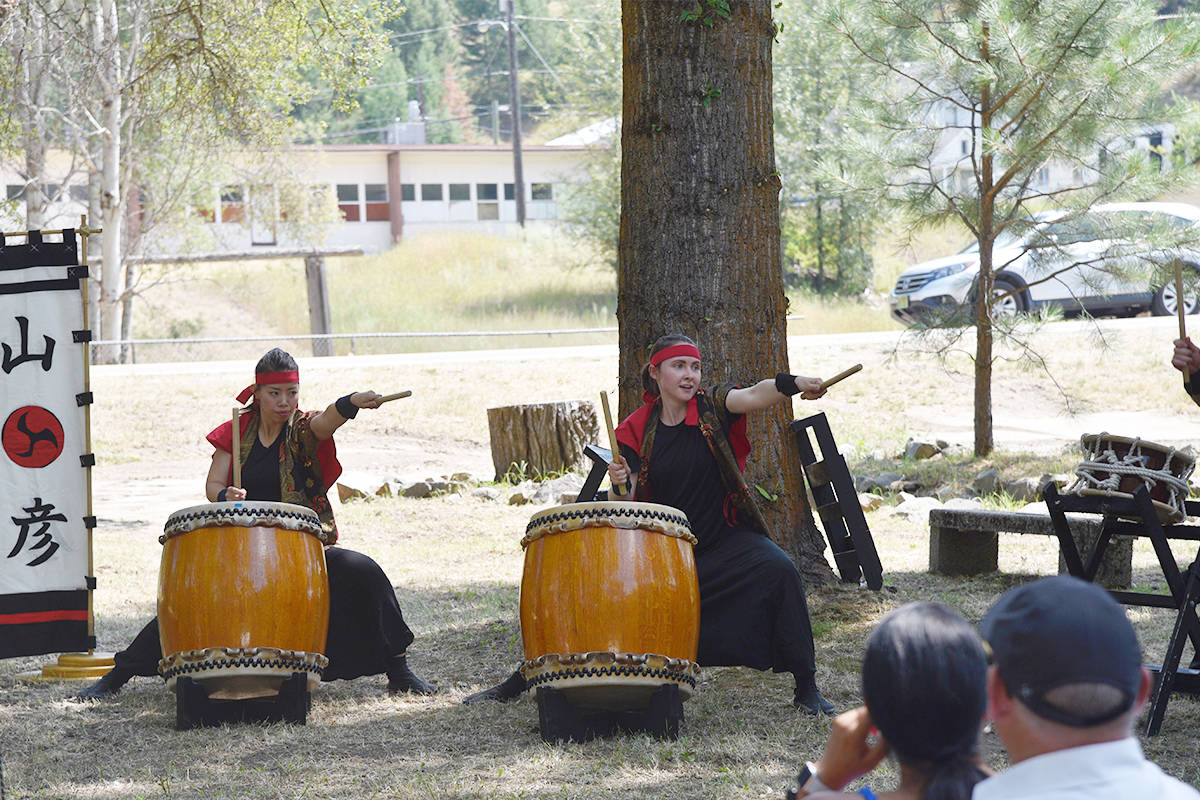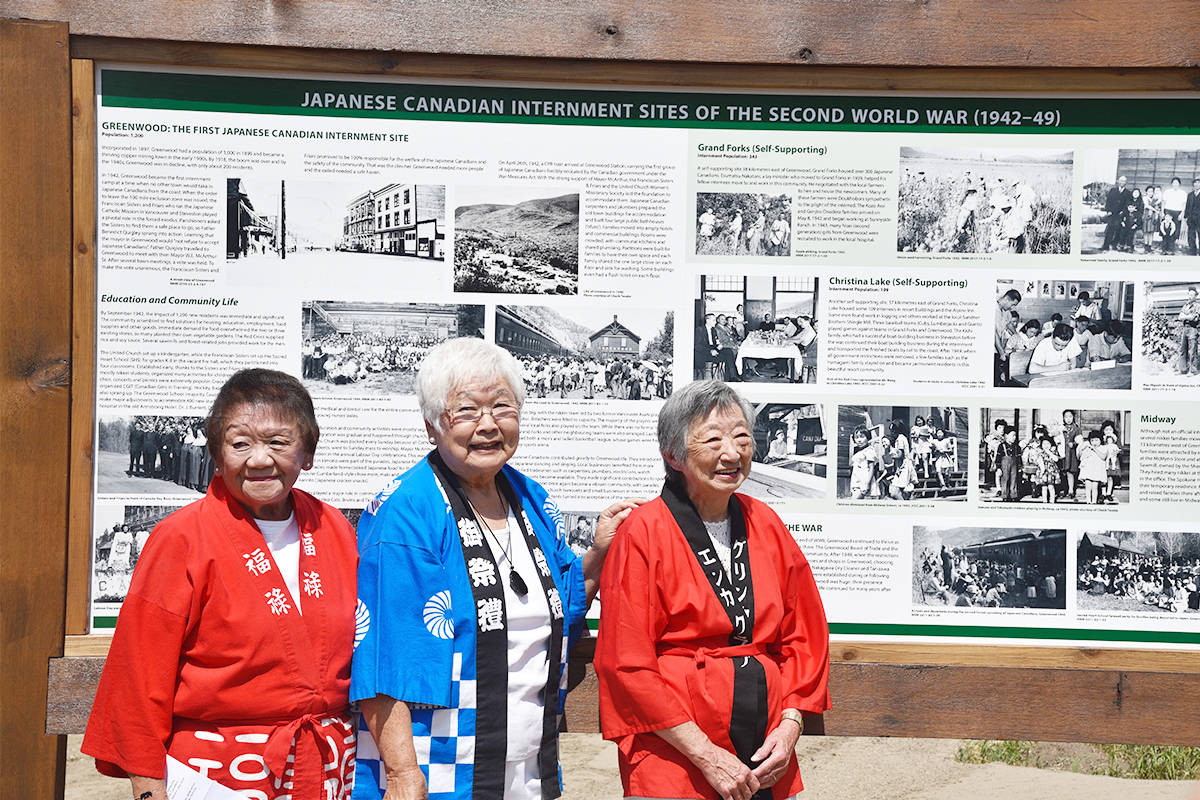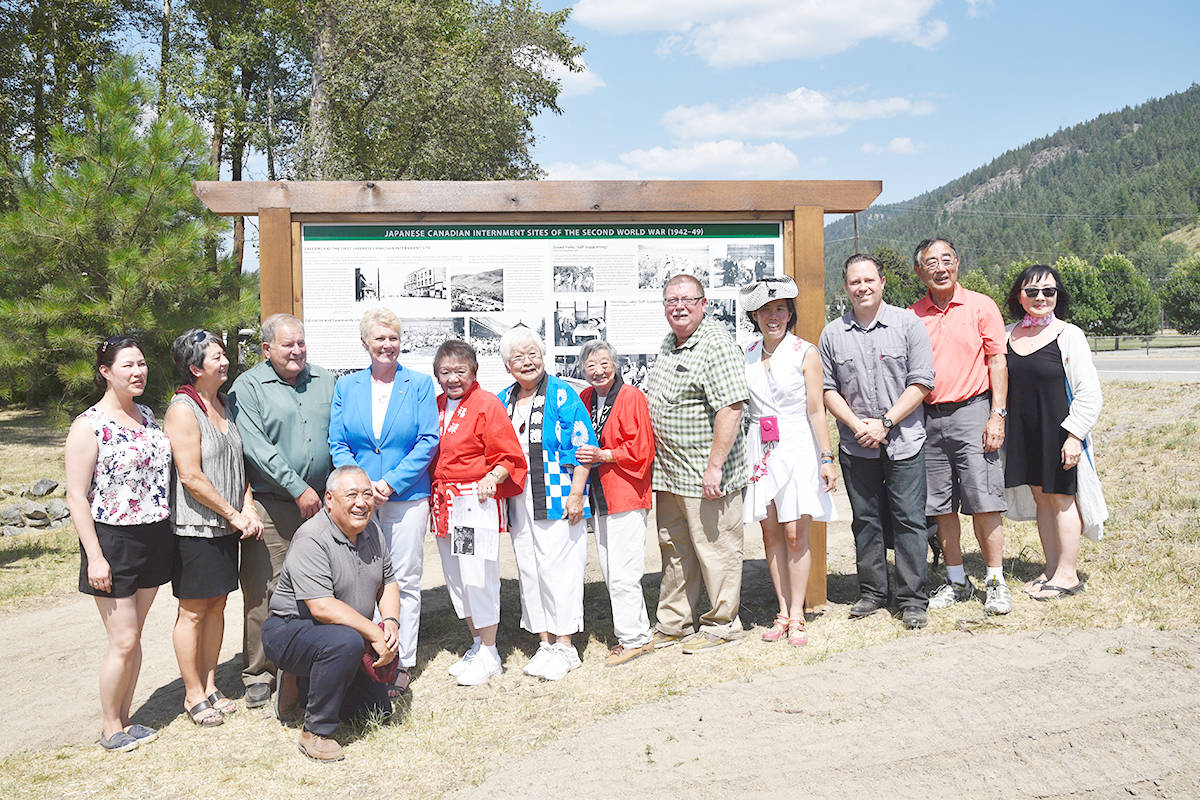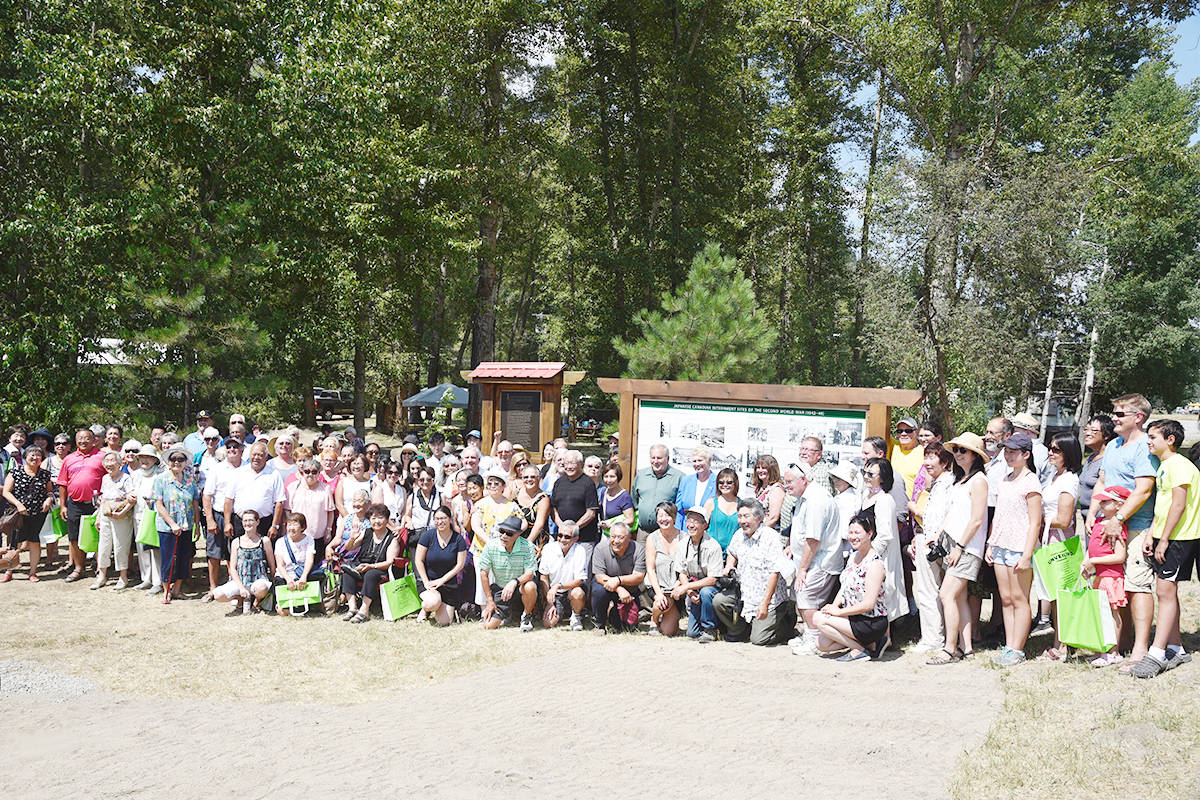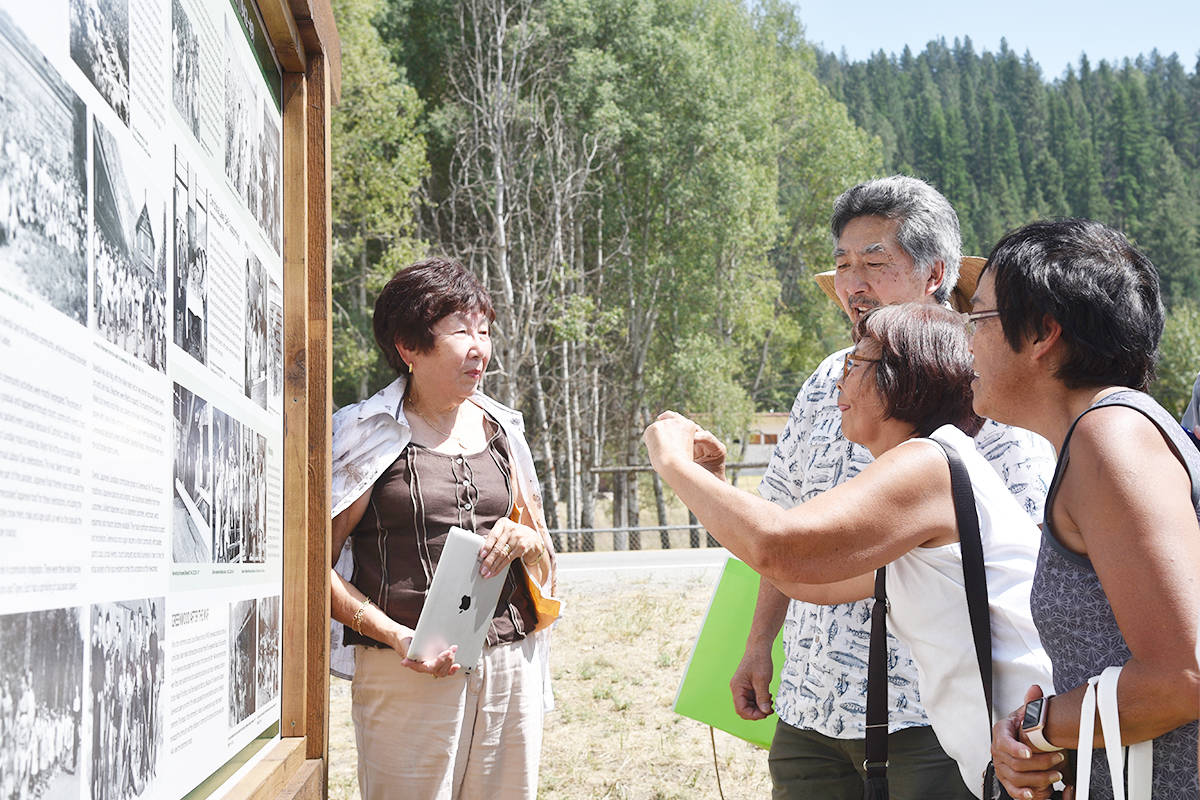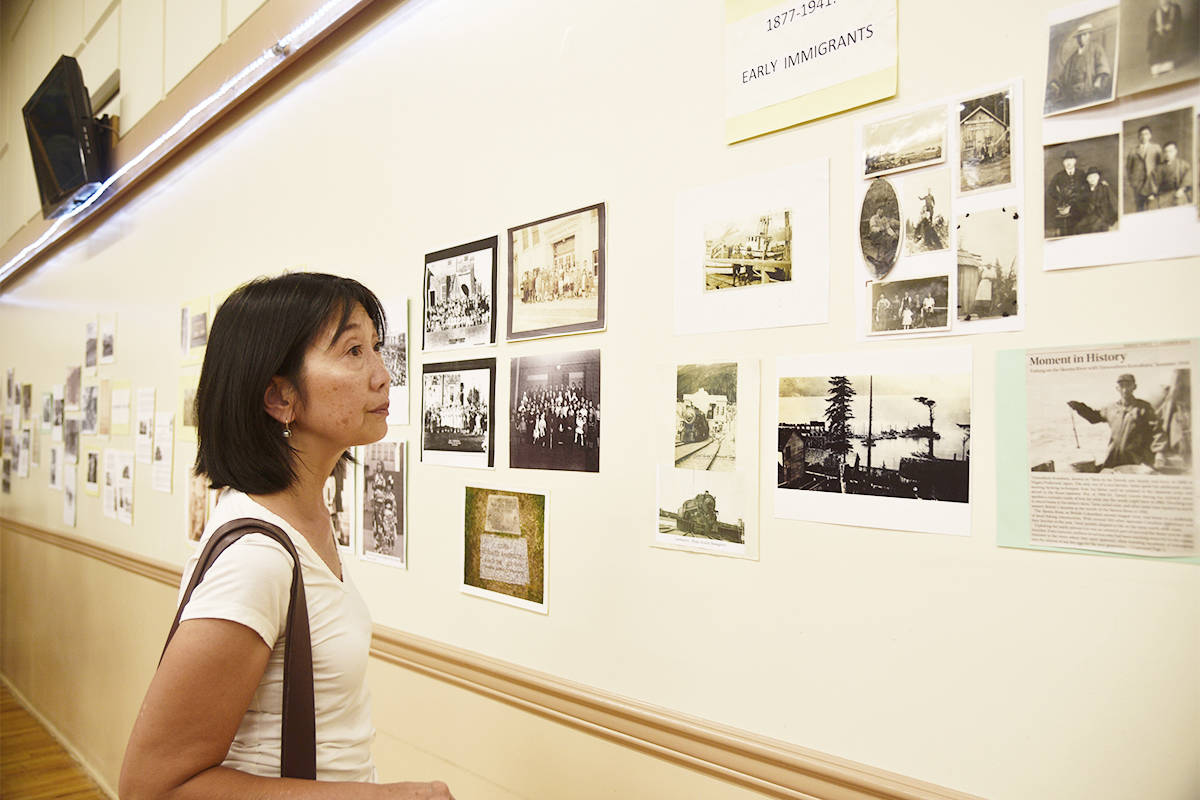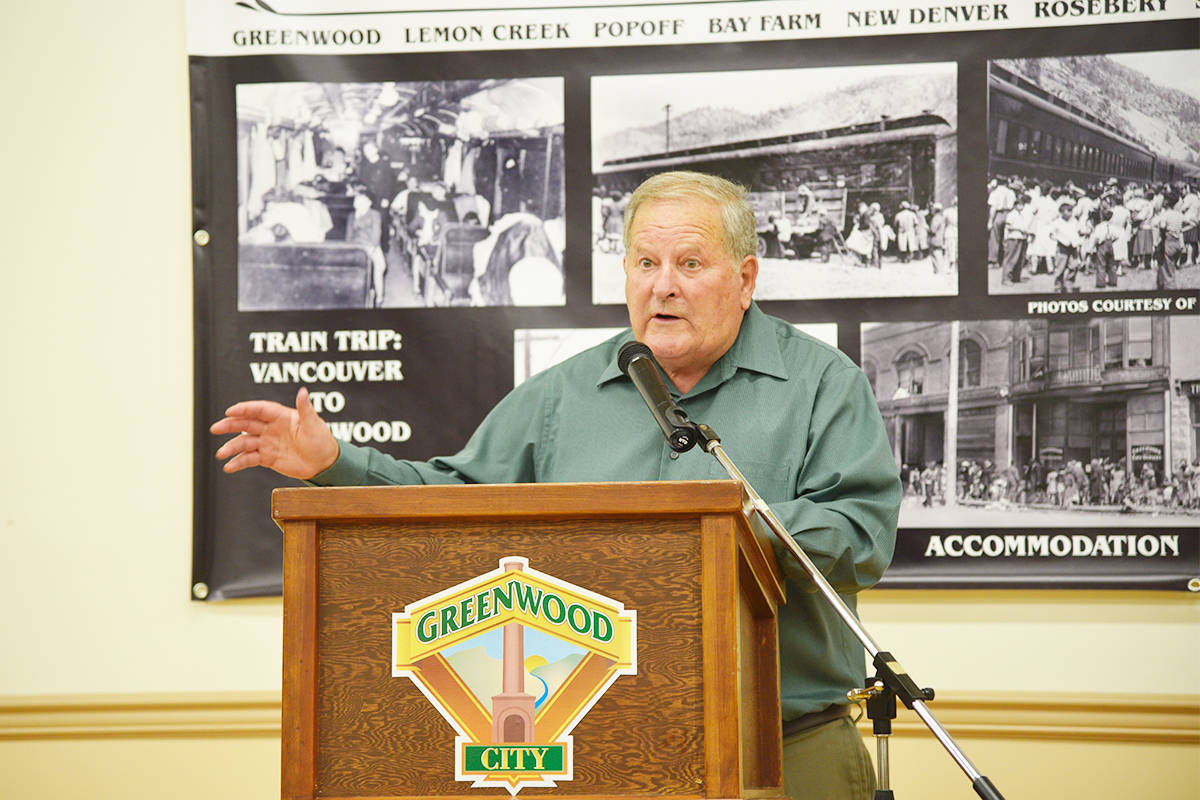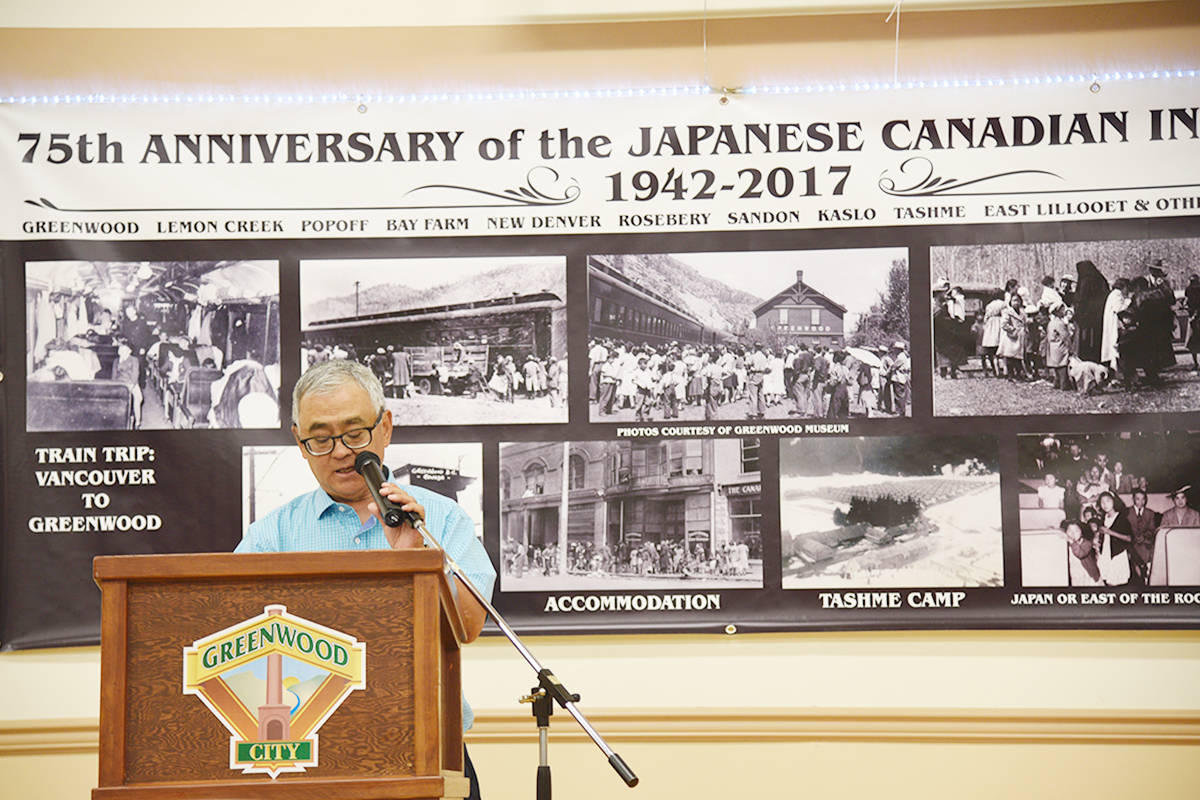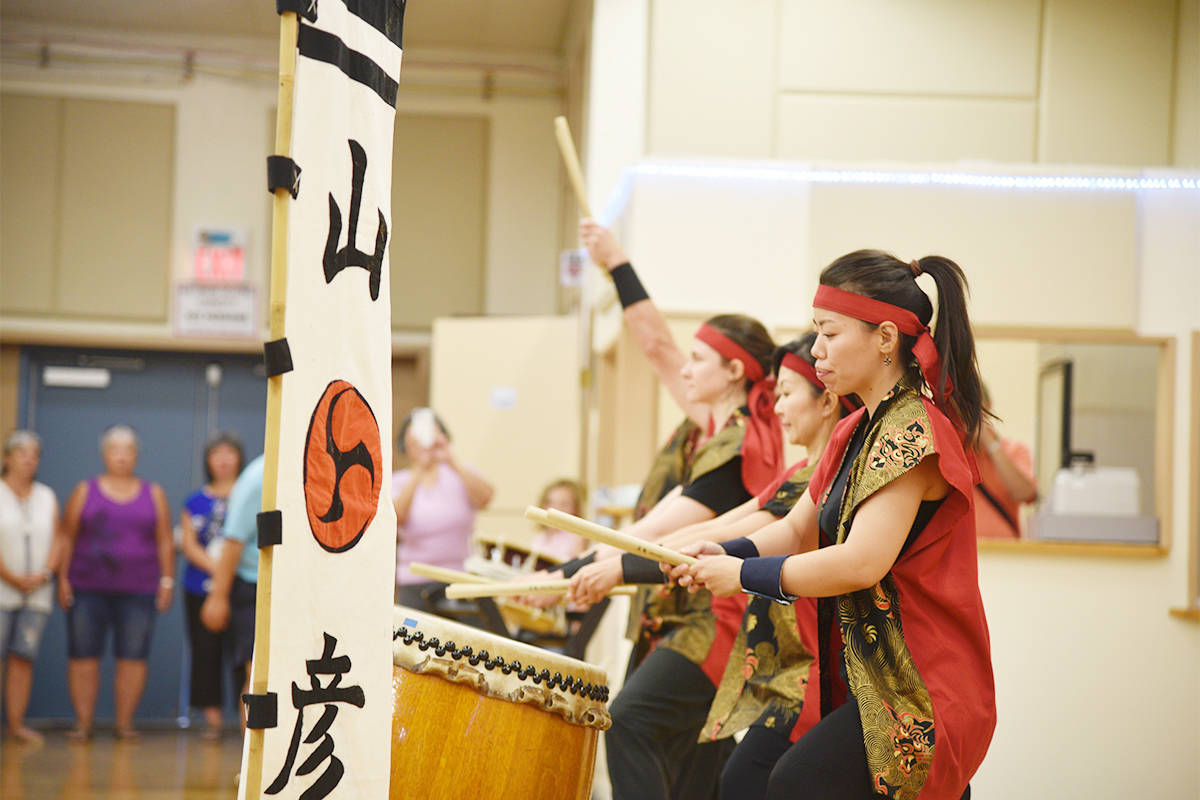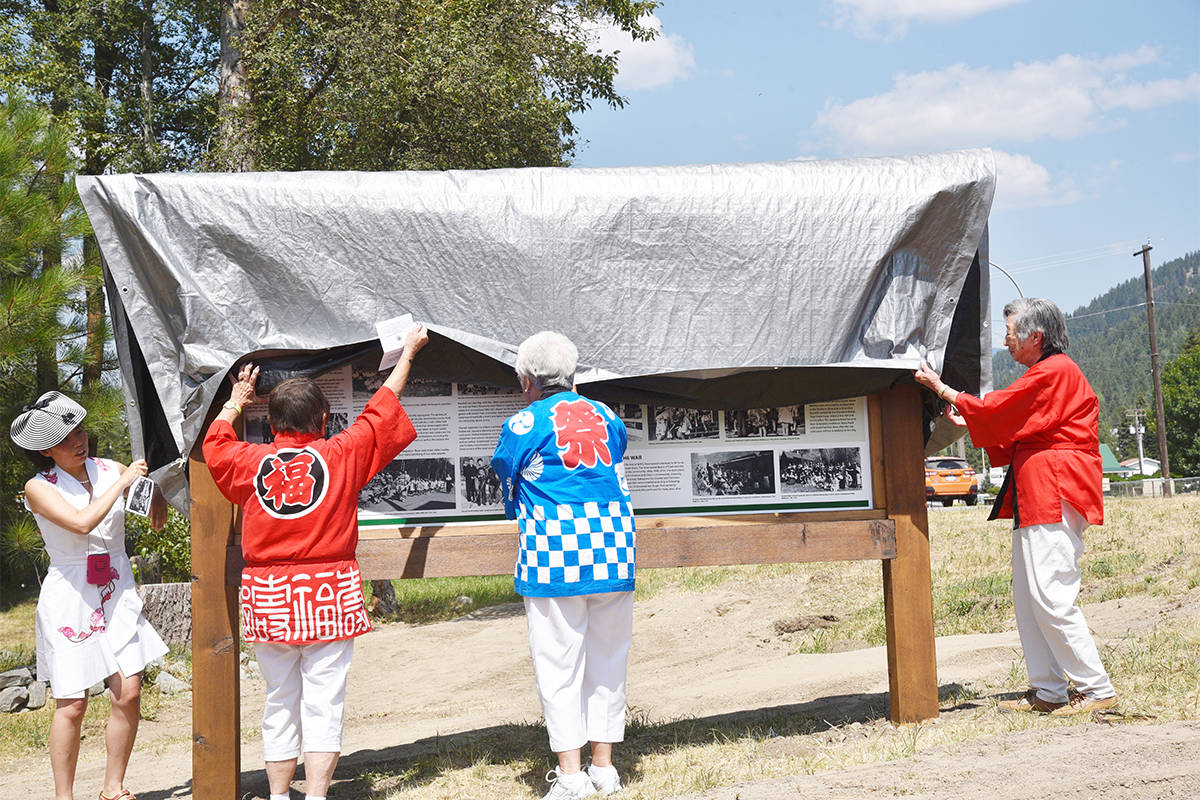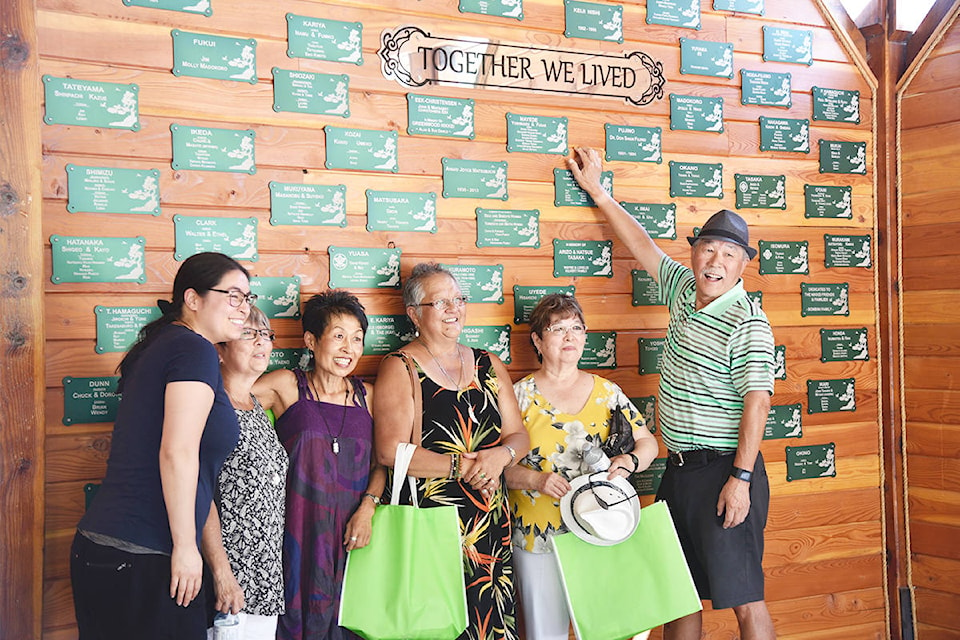Nearly 200 people gathered in Greenwood on Sunday to mark the 75th anniversary of Japanese internment in Greenwood in 2017, and celebrate the unveiling of highway signs and memorial wall in the Nikkei Legacy Park.
Members of the Japanese Canadian Legacy committee, a B.C.-wide initiative to advocate for Nikkei history, led the audience through a ceremony that started with drumming by Yamabiko Taiko of Kelowna. Following the drumming, a ribbon cutting was done on the pavilion in the Nikkei Legacy Park marking the family names wall, before the unveiling of the interpretive sign on Highway 3. Everyone was then invited back to the McArthur Centre for refreshments and remarks by elected officials.
The ceremony was attended by Greenwood Mayor Ed Smith, as well as MLA and Minister for Children and Family Development Katrine Conroy. MLA Linda Larson was not able to attend, but was represented by Everett Baker of Grand Forks.
The site was recognized last year as one of 56 Nikkei historic sites in the province, and further acknowledged by the Ministry of Transportation and Infrastructure as one of eight key sites for heritage and historic signage at internment sites.
“Our community dream has come true and history where it actually happened will not be forgotten,” said Laura Saimoto, Legacy committee member and the afternoon’s emcee.
The cluster of sites commemorated by the Greenwood sign include the internment camps in Greenwood and Midway, as well as the “self-supporting sites” in Grand Forks and Christina Lake. “Self-supporting” meant the sites received no government funding, though Japanese Canadians were still held there.
Greenwood was the first internment site in B.C..
“Grouped together these total about 1,800 interned in the Greenwood/Grand Forks area,” Saimoto said. “If you can imagine in 1942, Greenwood had a population of about 200. In 1942, 1,200 Japanese Canadians started to arrive at the Greenwood train station to settle down.”
Many of Sunday’s attendees were former internees, or descendants of internees who returned to get a glimpse of their family’s history.
Cindy Brown, now of Vancouver, said she came back to track down more of her family.
“I have kids, I want to pass it down to them, my daughter is here with me,” Brown said. “My family never spoke of it. All I know is that my grandparents had a home in Steveston, they had fishing boats and when the war broke out, it was taken away and they came here.
Brown’s mother’s family name was Yamashita.
“Hopefully someone will know my family and we can connect dots,” Brown said. “It is great that they want this known to everyone. This is what happened, this is my family that was here. Knowing [it will not be forgotten] is a great feeling.”
Conroy read a statement on behalf of Claire Trevena, minister for transportation and infrastructure
“It was a dark time in our province’s history, and although markers like this can be a painful reminder, they are an opportunity to grown and learn. The interpretive sign tells the story of Greenwood, the province’s first internment site, and other sites in the Boundary,” Conroy said.
Japanese Canadians continued to settle and remain in Greenwood following the war, in large part because of the actions of the mayor and the Greenwood Board of Trade.
A letter to Victoria’s city council by the Greenwood Board of Trade (that was on display Sunday) protests the government’s directive to send Japanese Canadians back to Japan or “go east of the Rockies.”
“They have been law-abiding under very difficult conditions. Their homes and property were taken from them, many of them lost their savings of a lifetime, and they were herded around, more or less, like cattle. In spite of this, they have come to Greenwood and cheerfully waited for the end of the war.
“It is not well at the present time to force Ottawa’s hand in any manner to send back to Japan 23,000 people who have just grievance against us,” the letter continued.
Gale Parisian (nee Kozai), now of Kelowna, said she was raised in Greenwood after her parents were interned there during the war. She returned with members of her family to instill the importance of remembering what happened in her children.
“We have been coming back to Greenwood every year since I moved away,” Parisian said.
“As our parents get older, really trying to understand moreso, with the new generations what it meant to be interned, what they sacrificed,” she said.
“I think my parents would be touched to see it hasn’t been forgotten. They would be happy about this recognition, because as we were growing up there was never talk about much of what happened, because they wanted to look past, but [now], to remember them with respect and understand the sacrifice.”
